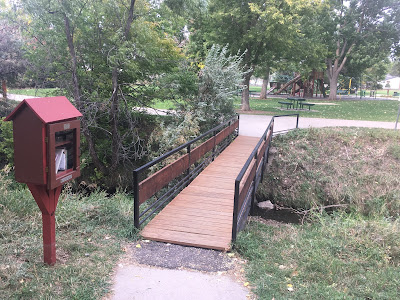 |
| Groomed nature walkway in Singapore |
by Gregory Saville
Many years ago I spoke to Paolo Soleri, the visionary (and apparently flawed) architect who created arcology, the marrying of architecture and ecology into a new type of city.
I met him at Arcosanti, his experimental city lab in the Arizona desert, and asked him where, among his artistic walls, curved roof apses, and dense architecture, did he plan to include greenery, parks and nature trails? He replied that arcologies attempt to build high density in every direction, including vertically, but do so by leaving nature alone as much as possible. However, Soleri assured me, access to nature will be easier in an arcology because no arcology dweller will ever be more than a kilometer from nature, untouched and pure – parks, streams, and forests.
That was an inspiring vision, one that seems far away today. I’m unsure how realistic, or desirable, it is to remove nature from within cities, especially given the many environmental and psychological reasons for walkable green space as Stephen Mouzon reports in his book The Original Green.
 |
| Path and pedestrian bridge along a Denver creek |
As we describe in Third Generation CPTED, nature, parks, trails and greenways have a deep psychological role in creating safe places and they will remain an important asset within large cities – whether it's New York’s Central Park or the massive Stanley Park in Vancouver. This is especially true in a time of COVID when everyone wants to get out from cabin fever.
What about crime along those trails? Park pathways, greenways and nature trails are known in the CPTED business as “movement predictors”, sometimes called architectural desire lines. It is possible to design movement predictors safely or otherwise (unintentionally), depending on where and how designers construct them.
A few years ago, we were asked to help design a Rails to Trails bikeway from a California train station through some very high crime neighborhoods. The project never happened, but it became clear to me that the single most important method for designing safe movement predictors is insuring users of those spaces are part of the design process. That's why it is such a central feature of all SafeGrowth programming.
 |
| California rail-to-trail bikeway - never built, still scary |
Collaborative design far surpasses the landscape architect’s penchant to: 1) look for published design guidelines; 2) design the trail; 3) show residents the results afterward; and 4) hope for the best.
Our COVID world is creating a powerful impetus for city dwellers all over the world to take to the trails and experience nature. That is a good thing. Let’s ensure those trails are shared and safe.

Leave a comment
Please add comments to SafeGrowth. I will post everyone except posts with abusive, off-topic, or offensive language; any discriminatory, racist, sexist or homophopic slurs; thread spamming; or ad hominem attacks.
If your comment does not appear in a day due to blogspot problems send it to safegrowth.office@gmail.com and we'll post direct.